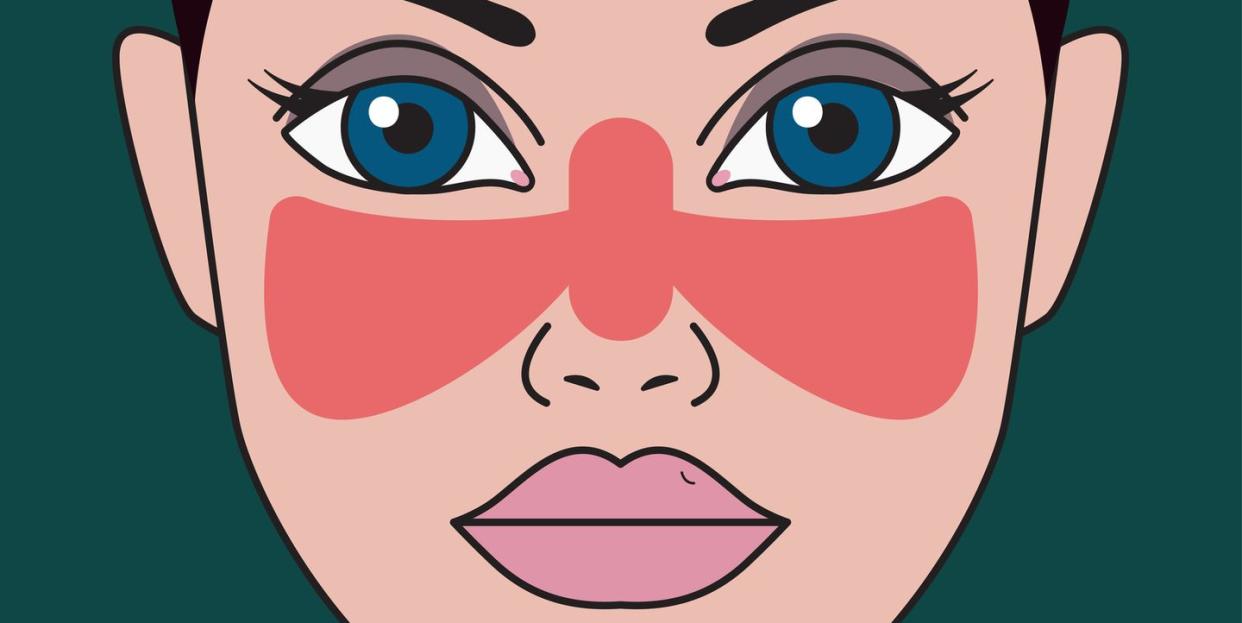The telltale signs you might have lupus

If you're constantly tired and suffering from joint pain and an unexplained facial skin rash, these are just a few of the associated symptoms which mean it might be worth getting tested for lupus.
GP Dr Roger Henderson looks at the symptoms, diagnosis and treatment options for this long-term autoimmune disease that causes inflammation to the joints, skin and organs.
What is lupus?
Lupus is a chronic condition of unknown cause that causes inflammation in the body's tissues. Because its symptoms vary from person-to-person, it's not always diagnosed quickly, typically developing between the ages of 15 and 40.
It's nine times more common in women than men, and is also seen more in Afro-Caribbean, Chinese and Asian populations. The main trigger of lupus is hormonal activity and change, so lupus can often be triggered after childbirth, at the menopause or during puberty.
In lupus, the immune system attacks the body's healthy tissue instead of protecting it. The most common form is known as systemic lupus erythematosus (SLE), which affects the whole body, with a rarer discoid form only affecting the skin.
The term 'lupus' is derived from the Latin word for 'wolf' as lupus vulgaris, a severe facial rash rarely seen now, was once thought to resemble a wolf's bite.
What are the symptoms of lupus?
Lupus affects everyone differently and symptoms can vary widely, ranging from mild fatigue to severe pain. Some people may have only a few mild symptoms while others may experience considerably more severe symptoms. The most common SLE symptoms include the following:
Tiredness
Joint pains in the hands and feet
A rash over the cheeks and bridge of the nose known as a 'butterfly rash'
Fever
Swollen lymph glands
Recurring mouth ulcers
Mood changes
Miscarriage - often recurrent – can be another complication of lupus
One difficulty with lupus is that although it is more common than leukaemia, muscular dystrophy and multiple sclerosis worldwide, it is sometimes diagnosed late because those conditions (and others) share a number of similar symptoms to lupus.
How is lupus diagnosed?
Lupus is diagnosed by blood tests, although its wide range of symptoms can often make diagnosis tricky in general practice and a specialist assessment may be required. Important tests that help confirm the diagnosis are an anti-nuclear antibody test, an anti-DNA antibody test and a complement level test.
If diagnosed, further tests such as ultrasound or CT scanning may be required to check if any internal organs have been affected – typically the kidneys and the skin but the heart, lungs and brain are also often affected.
How is lupus treated?
Unfortunately there is no current cure for SLE. Treatment aims to minimise symptoms and their effect on normal daily activities. Drugs used include anti-inflammatories, hydroxychloroquine, corticosteroids and immunosuppressants. Sufferers should also stay out of the sun as this can worsen symptoms.
Most people with lupus can now anticipate a normal lifespan following advances in treatment and the use of steroids.
Patients with lupus often learn to 'pace' themselves and not become over-tired as rest is very essential. Being open with family and friends about the diagnosis and its unpredictable pattern is important, as is seeking medical assistance at the right time.
For more information or support, visit LUPUS UK.
You Might Also Like

